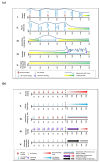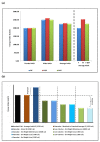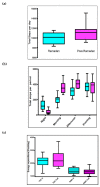Energy Metabolism and Intermittent Fasting: The Ramadan Perspective
- PMID: 31137899
- PMCID: PMC6566767
- DOI: 10.3390/nu11051192
Energy Metabolism and Intermittent Fasting: The Ramadan Perspective
Abstract
Intermittent fasting (IF) has been gaining popularity as a means of losing weight. The Ramadan fast (RF) is a form of IF practiced by millions of adult Muslims globally for a whole lunar month every year. It entails a major shift from normal eating patterns to exclusive nocturnal eating. RF is a state of intermittent liver glycogen depletion and repletion. The earlier (morning) part of the fasting day is marked by dominance of carbohydrate as the main fuel, but lipid becomes more important towards the afternoon and as the time for breaking the fast at sunset (iftar) gets closer. The practice of observing Ramadan fasting is accompanied by changes in sleeping and activity patterns, as well as circadian rhythms of hormones including cortisol, insulin, leptin, ghrelin, growth hormone, prolactin, sex hormones, and adiponectin. Few studies have investigated energy expenditure in the context of RF including resting metabolic rate (RMR) and total energy expenditure (TEE) and found no significant changes with RF. Changes in activity and sleeping patterns however do occur and are different from non-Ramadan days. Weight changes in the context of Ramadan fast are variable and typically modest with wise inter-individual variation. As well as its direct relevance to many religious observers, understanding intermittent fasting may have implications on weight loss strategies with even broader potential implications. This review examines current knowledge on different aspects of energy balance in RF, as a common model to learn from and also map out strategies for healthier outcomes in such settings.
Keywords: Fast; Ramadan; energy expenditure; intermittent; weight.
Conflict of interest statement
The authors declare no conflict of interest.
Figures




References
-
- Ali M.M. The Holy Quran. King Fahd Complex for the Printing of the Holy Quran; Medina, Saudi Arabia: 2011. pp. 183–185.
-
- Jane L., Atkinson G., Jaime V., Hamilton S., Waller G., Harrison S. Intermittent fasting interventions for the treatment of overweight and obesity in adults aged 18 years and over: A systematic review protocol. JBI Database Syst. Rev. Implement Rep. 2015;13:60–68. doi: 10.11124/jbisrir-2015-2363. - DOI - PubMed
Publication types
MeSH terms
Substances
LinkOut - more resources
Full Text Sources
Research Materials
Miscellaneous

